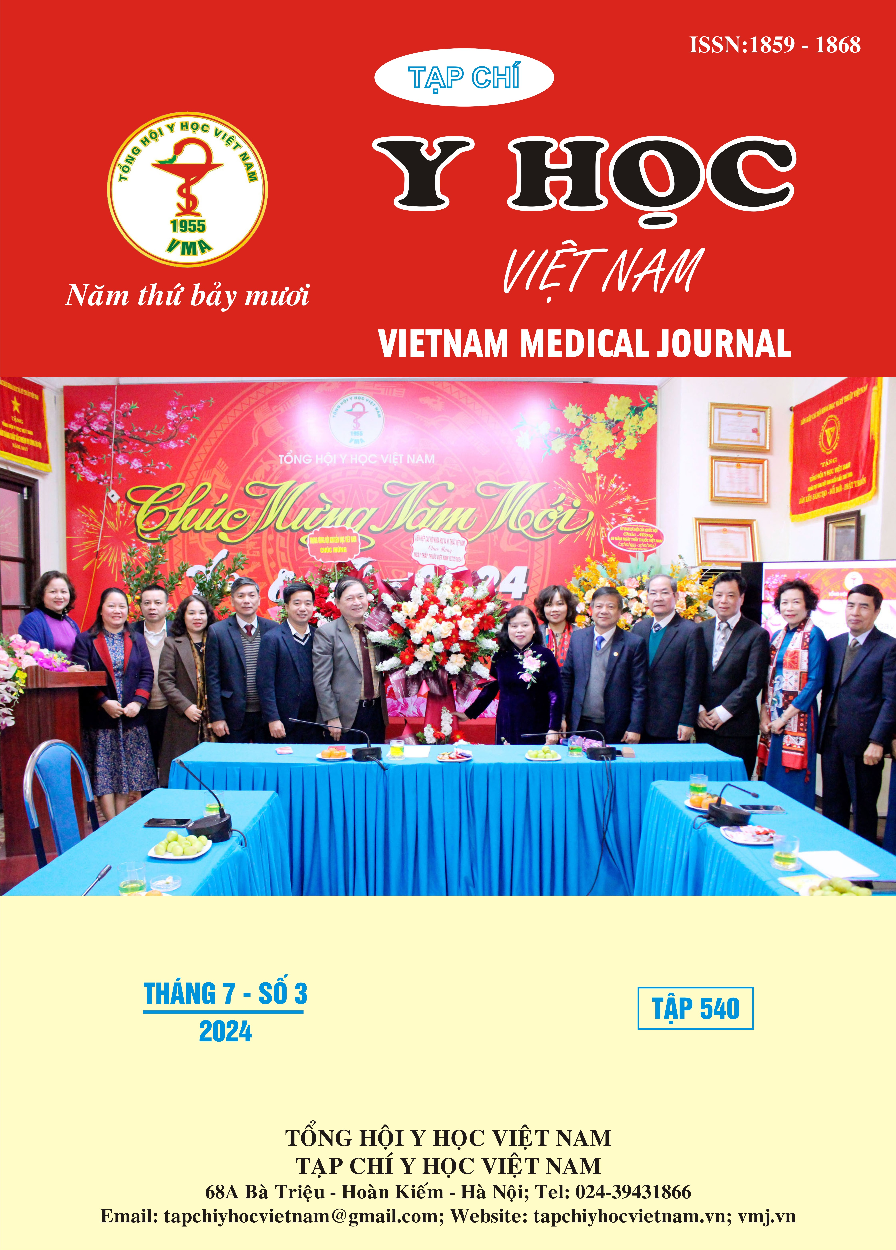THE CLINICAL AND X-RAY CHARACTERISICS AND ASSESSMENT OF SURGICAL TREATMENT OF MANDIBULAR FRACTURES USING MINIPLATE AT HO CHI MINH CITY HOSPITAL OF ODONTO-STOMATOLOGY
Main Article Content
Abstract
Introduction: Mandibular fractures are among the most common oral maxillofacial fractures. Oral maxillofacial injuries in general and of mandibular fractures in particular, can significantly affect the functionaly and aesthetics of patients, and can even be life-threatening if not managed promptly and appropriately. Objective: To investigate the clinical and X-ray characteristics, and surgical treatment of mandibular fractures using miniplate. Materials and methods: A cross-sectional descriptive study of 52 patients with simple mandibular fractures in the chin region who underwent surgical treatment with miniplates at the Ho Chi Minh City Hospital of Odonto-Stomatology from April 2023 to April 2024. Results: The average age of the patients was 31.9 ± 10.1 years, with males comprising 75% of the sample. The primary causes of fractures were traffic accidents (73.1%) and domestic incidents (13.5%). The majority of the patients were manual laborers (84.6%). Symptoms included limited mouth opening (92.3%), malocclusion (69.2%), swelling and hematoma (67.3%), sharp pain (57.7%), and discontinuity of the bone margin (40.4%). Dental arch disruption was noted in 34.6% of patients, and 23.1% experienced numbness in the lip and chin areas. Typically, the mandibular X-rays showed 1 to 2 fracture lines, predominantly displaced but without axial deviation. Most patients were treated using two miniplates, and the average surgical time was 62.58 ± 30.28 minutes. Conclusion: Patients with mandibular fractures presented with a variety of symptoms such as malocclusion, swelling, hematoma, sharp pain, and bone margin discontinuity. The fractures typically involve 1 to 2 lines, are mostly displaced but not axially deviated. Surgical treatment with miniplates is effective, with a relatively short average surgical time and usually involving the use of two miniplates.
Article Details
Keywords
mandibular fracture, miniplate fixation, surgery, bone fixation, mandible.
References
2. Nguyễn Tuấn Kiệt (2020), nghiên cứu đặc điểm lâm sàng, x quang và đánh giá kết quả phẫu thuật gãy xương hàm dưới vùng góc hàm bằng nẹp vít nhỏ tại bệnh viện đa khoa trung ương cần thơ, năm 2019 - 2020, Luận văn Thạc sĩ Y học, Trường Đại Học Y Dược Cần Thơ.
3. Hoàng Minh Phương, Trần Tấn Tài, Nguyễn Hồng Lợi và các cộng sự., "nghiên cứu áp dụng phương pháp champy trong điều trị gãy góc hàm xương hàm dưới".
4. Nguyễn Quốc Trung, Nguyễn Hồng Hà và Đặng Triệu Hùng (2023), "đặc điểm lâm sàng, phim cắt lớp vi tính của bệnh nhân gãy xương hàm dưới tại bệnh viện hữu nghị việt đức 2018-2023", Tạp chí Y học Việt Nam. 531(2).
5. Kwon G. và M. H. Hohman (2024), "Inferior Alveolar Nerve and Lingual Nerve Injury", StatPearls, Treasure Island (FL).
6. Sarepally G., S. Seethamsetty, T. Karpe và các cộng sự. (2022), "A Comparative Evaluation of 2.0mm Two-Dimensional Miniplates Versus 2.0mm Three-Dimensional Miniplates in


